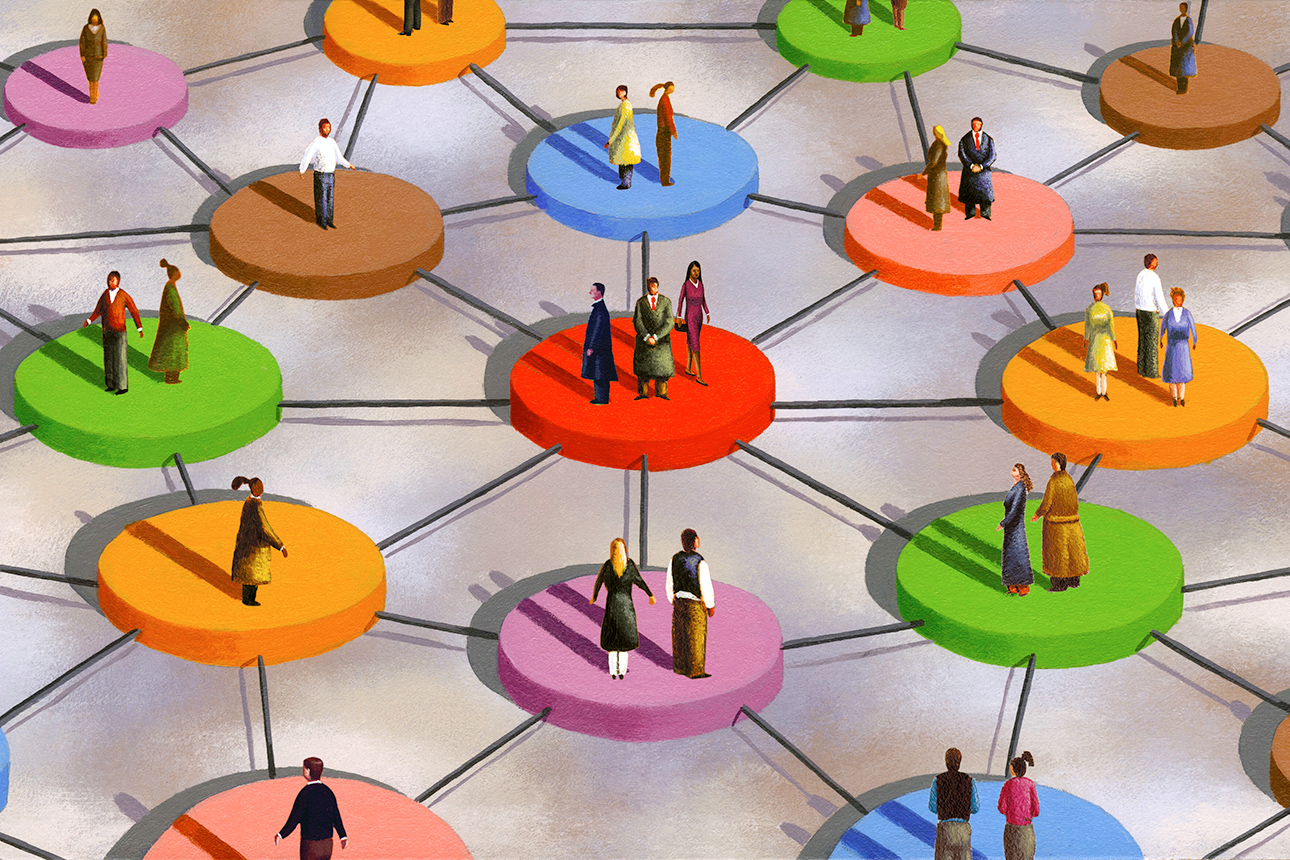Use Networks to Drive Culture Change
Surveying employees about their values has its limits. You’ll gain more insight into organizational culture — and find targeted ways to change it — by also analyzing patterns of collaboration.

Image courtesy of James Fryer/theispot.com
Few habits are harder to break than “the way we do things around here.”
Organizational culture is notoriously difficult to change, in part because it reflects people’s values — their deeply held beliefs about what is good, desirable, and appropriate.1 Relationships can complicate matters further. When colleagues are embedded in informal networks with others who share and reinforce their values, they often become entrenched rather than open to new attitudes and behaviors.
But it doesn’t have to be like that. Those same networks can also help leaders identify and overcome obstacles to cultural change and discover unexpected allies.
Our research and practical experience have shown that many leaders aren’t aware of this potential, largely because traditional assessments of organizational culture tend to focus on finding commonality.2 One popular approach is to use surveys to assess employees’ values, attitudes, norms, and behaviors and then average the responses to gauge where the organization as a whole stands. Another approach is to conduct deep interviews and then craft personas illustrating how “typical” employees’ values guide their behaviors. Because these approaches reveal central tendencies, they miss powerful insights about where people differ in their values. Rather than calculating an average score — say, a 4 — on a given value, leaders need to know where the pockets of 3s and 5s (and even the clusters of 1s and 2s) are. And they need to see who is interacting with whom within and between those pockets and clusters if they want to persuade people to embrace new cultural priorities.
Combining survey data with network analysis is a useful way to gain that insight. (See “Map Your Team’s Values.”) Mapping patterns of collaboration in an organization provides a kind of X-ray view of its inner workings. It shows, for example, where people are separated by silos in a network, who is isolated on the periphery, which individuals are opinion leaders, and which ones are uniquely situated to connect people and integrate different values.3 Once leaders know all that, they can pursue cultural change in a more targeted manner.
References (8)
1. H. Ibarra, “Take a Wrecking Ball to Your Company’s Iconic Practices,” MIT Sloan Management Review 61, no. 2 (winter 2020): 13-16.
2. For example, see N.M. Ashkanasy, C.P.M. Wilderom, and M.F. Peterson, “The Handbook of Organizational Culture and Climate,” 2nd ed. (Thousand Oaks, California: Sage Publications, 2010).




